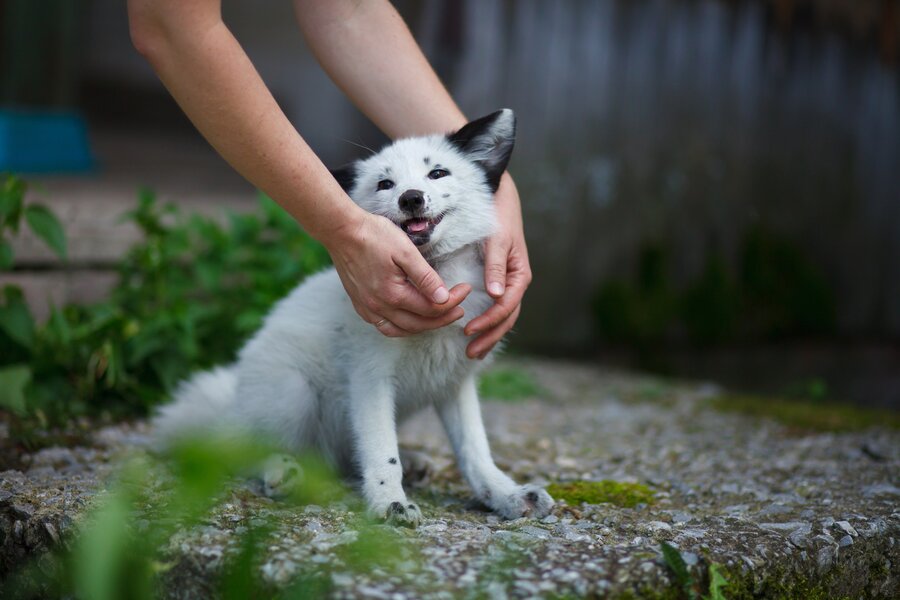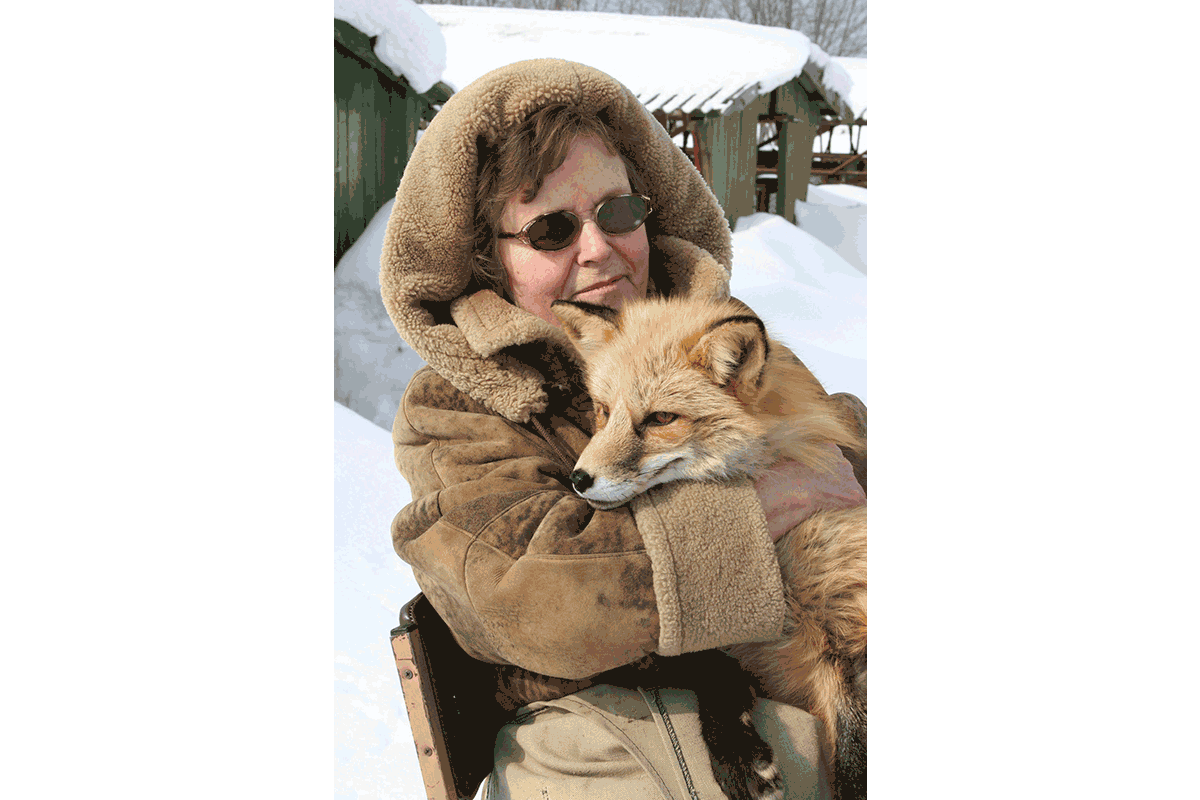Cuddly foxes show the ‘softer side’ of evolution
Loading...
It’s not every day that a fox licks your face. But that’s just what happened when biologist and science historian Lee Dugatkin visited a Siberian experiment in fox domestication that marks its 60th anniversary this year. “This animal, which had never seen me before, within five seconds was licking my nose and ears,” says Professor Dugatkin of his furry new friend. “He was calmer and more friendly than the calmest lap dog you can imagine.” Fueled by the ongoing revolution in our understanding of genetics and molecular biology, the experiment’s findings are now revealing details of a potent evolutionary process that might help explain the emergence of modern Homo sapiens and our species’ ability to build civilizations. “Our own evolutionary trajectory has been radically shaped by domestication,” says Dugatkin, the co-author of the 2017 book “How to Tame a Fox (and Build a Dog).” “It creates kind of a softer side to the story of human evolution.”
Why We Wrote This
Evolution is often cast as a brutal contest for the survival of the fittest. But increasingly, it seems that the ability to get along with others also plays a significant role.
When Lee Dugatkin went to Siberia in 2012 to learn more about an experiment that is illuminating one of the oldest problems in evolution, there was a moment he describes as “nirvana.”
“This animal, which had never seen me before, within five seconds was licking my nose and ears,” says the University of Louisville biologist and science historian. “He was calmer and more friendly than the calmest lap dog you can imagine.”
This friendly animal was not a dog, but a fox, Vulpes vulpes, a species not typically known for leaping into the arms of unfamiliar primates. But this particular fox, a reddish male adult with a slender build and puplike face, belonged to a lineage that had been transformed.
Why We Wrote This
Evolution is often cast as a brutal contest for the survival of the fittest. But increasingly, it seems that the ability to get along with others also plays a significant role.
Professor Dugatkin was visiting the site of an experiment, which this year marks its 60th anniversary, at the Institute of Cytology and Genetics in Novosibirsk, Russia, that aimed to domesticate a wild species. Fueled by the ongoing revolution in our understanding of genetics and molecular biology, the experiment’s findings are now helping to reveal details of a potent evolutionary process that might help explain the emergence of modern Homo sapiens and our species’ ability to build civilizations.
“Our own evolutionary trajectory has been radically shaped by domestication,” says Dugatkin, the co-author of the 2017 book “How to Tame a Fox (and Build a Dog).” “It creates kind of a softer side to the story of human evolution.”
Playing the fox
When Russian zoologist Dmitry Belyaev began working with foxes in the 1950s, he was studying a problem that had perplexed biologists ever since Charles Darwin noted that domesticated animals, from dogs to pigs to horses, often share a suite of seemingly unrelated traits. Compared to their wild counterparts, domestic animals’ ears are often floppier, their tails curlier, and their coats more multicolored. Domestic animals often appear more juvenile than wild ones, with flatter faces, smaller jaws and teeth, and more gracile bodies. But why?
The Soviet Union at the time was a dangerous place to practice Mendelian genetics. Until the mid-1960s, publicly supporting such “bourgeois pseudoscience” could result in a prison sentence, or worse. Indeed, Dr. Belyaev’s older brother, Nikolai, a silkworm geneticist, was executed under Stalin in 1937.
So when Belyaev recruited a young graduate assistant, Lyudmila Trut, to manage the experiment, he informed her that, officially, the project’s aim would be to increase production for the fur industry. Unofficially, it would be to breed the wild out of the fox.
The plan was as straightforward as it was audacious. The foxes, originally gathered from fur farms, are raised in cages. Beginning around the age of one month, each pup is periodically approached by a human caretaker and scored on a single criterion: the absence of a fearful or aggressive response to humans. In the experiment’s original design, only those with the highest scores would be allowed to reproduce, and then the process repeats for each subsequent generation.
From wild to mild
Measured on an evolutionary timescale, the shift happened in a blink. Within 10 generations – foxes breed annually – the animals were happily greeting humans, sometimes even licking their caretakers’ faces. What’s more, just as Belyaev predicted, the foxes began to show some of the other telltale marks of domestication: floppy ears, curly tails, piebald fur, thinner bones, and a more juvenile appearance.
Belyaev died in 1985, but Dr. Trut, who co-authored “How to Tame a Fox” with Dugatkin, continues the work. And now, after 60 years of breeding for a single trait, a canid population exists that makes golden retrievers look rather standoffish.
“It’s like interacting with the friendliest dog imaginable,” says Dugatkin.
Dugatkin stresses that these changes are happening at the genetic level. While it is certainly possible to raise a wild fox from birth and condition it to behave in certain ways around humans, doing so has no effect on the tameness of its offspring.
A unified hypothesis?
In the years since then, Belyaev and Trut’s experiment has continued to bear fruit. In 2014, a trio of researchers writing in the journal Genetics used the data to develop a unified model that could explain the hodgepodge of physical characteristics – from the ears to the tail – that change with the decline of emotional reactivity.
“This is a phenomenon that is likely to have happened numerous times in the evolution of wild animals,” says Harvard University anthropologist Richard Wrangham, one of the authors of that paper, noting how animals on islands typically become tamer over time.
Professor Wrangham notes that some anthropologists believe that humans’ closest relatives may have undergone a similar shift. Chimpanzees and bonobos diverged from one another about 2 million years ago. Both share 99 percent of their genome with humans, but their behavior and social structure is markedly different. Chimpanzees are male-dominant and aggressive, particularly between groups. Bonobos, which have more gracile features compared to chimps, are female-dominant and generally more docile.
Domesticating the domesticators
The idea that a species can self-domesticate could hold important implications for the history of our own species. When compared with those of archaic humans, such as Neanderthals and early H. sapiens, the skulls of modern humans appear more juvenile, with smaller and flatter faces, much like the skulls of dogs compared to wolves, domesticated foxes to wild foxes, and bonobos to chimpanzees.
This facial downsizing looks a lot like self-domestication, says University of Iowa anthropologist Robert Franciscus.
Early on in our species’ history, contact between different groups of humans would have been marked by violence between males, just as it is with chimpanzees, says Professor Franciscus. But, beginning about 80,000 years ago and accelerating as our species migrated out of Africa some 60,000 years ago, groups of humans became less and less isolated from one another.
This increased contact opened the door to a new strategy: altruism.
“When you live in small, connected bands across the landscape, and you engage in altruistic behavior, then you can be helped when you’re in trouble,” Franciscus says. “That kind of scenario might be difficult to get going, but once it does, you can imagine how it could take off very quickly.”
As altruistic males began out-competing aggressive males, more robust social networks emerged, and so too did the ability to transmit culture, such as tool-making techniques, burial practices, art, music, language, and so on, between groups. This ability to disseminate ideas, and not just the ability to come up with them, says Franciscus, is what distinguishes modern H. sapiens from our relatives.
“Cognitive processes by themselves probably are not sufficient,” he says “Technological innovation requires the ability of ideas to actually spread throughout humans groups, so that you don’t constantly have to reinvent them.”









